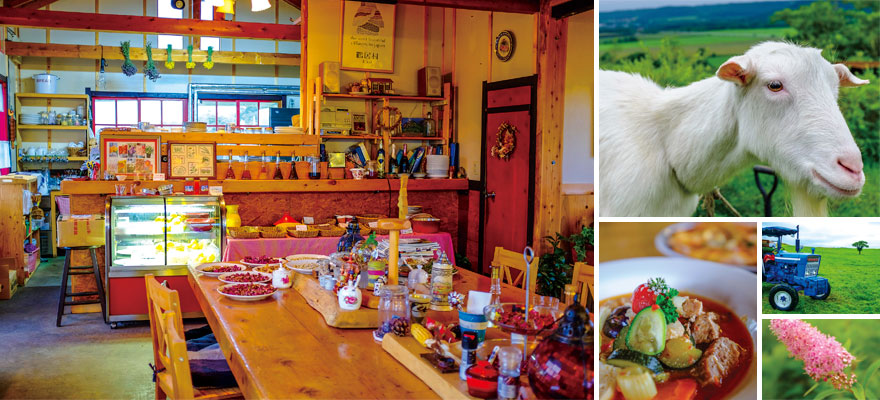Home > Highlighting JAPAN > Highlighting Japan September 2013 >Mount Fuji, World Heritage Site
Highlighting JAPAN
47 Prefectures from A to Y
Hokkaido
A visit to Tsurui village

Located 45 minutes outside of Kushiro in Eastern Hokkaido is Tsurui Village, a quaint little farming hamlet surrounded by rolling hills and tranquil rivers. Wedged between the Akan National Park and the Kushiro Shitsugen National Park, Tsurui Village offers one of the purest forms of sustainable living Hokkaido has to offer and happens to be a breeding ground for the majestic Japanese tancho crane. In 2008, Tsurui Village was recognized as one of "The Most Beautiful Villages in Japan," a title reserved for villages that rely heavily on local and regional sustainable resources, and more importantly, are proactive in protecting them to ensure they continue to grow and prosper.
One example of true sustainable living is the "Heart 'n' Tree Cafe". The cafe, perched on a hillside overlooking Tsurui Village, serves 100% locally sourced produce, most of which is grown in its own gardens. Mrs. Hattori, the owner and chef, carefully prepares each meal and takes the time to explain the origin of each ingredient, giving one a sense of how proud the local people are of their culture, and how important surrounding farmlands are in ensuring its sustainability.
Mr. Masahiro Wada, owner of Hotel Taito, is another passionate Tsurui local who runs early morning tours of the region. Wada is proud of the region's accomplishments and makes a special effort to give visitors the opportunity to explore and learn about the wetlands surrounding Cape Kirakotan. The tour starts in Tsurui Village, weaving its way through rolling farmland, stopping to view elegant Japanese cranes raising their broods, cows grazing on the fertile land and skittish deer patrolling the meadows. The walking tour weaves its way through dense summer foliage as the sound of early morning bird-songs compete with the light tapping of raindrops on the forest canopy. Mr. Wada explains the fragility of the wetland ecosystem and emphasizes the importance of protecting it for future generations to enjoy.
Perhaps the most iconic resident of Tsurui Village is the Japanese tancho crane, one of Japan's Special Natural Monuments which was thought to be extinct in the early 1900's. It was not until 1924 that a small group of Japanese cranes were rediscovered in the wetlands and subsequent efforts by local citizens successfully replenished the crane numbers to over 1,000 in the Hokkaido region alone.
One location to view and learn about tancho is at the year-round Tsurumidai feeding ground located just outside the village. At Tsurumidai, cranes can be observed performing their elaborate courtship dance during the winter and raising their brood during the short summer season. Another accessible location to learn about the delicate ecosystem and its wildlife is the Onnenai High Moor Community. The visitor center highlights the importance of the wetland and showcases the different species that inhabit it. A raised boardwalk guides visitors through the ever changing wetland, allowing them to learn from various information boards that highlight the moor's rich abundance of plant, bird and insect life.
The citizens of Tsurui Village are passionate in their commitment to use sustainable resources and protect the abundant natural beauty of the surrounding area, and it is through such efforts that one of the most beautiful villages in Japan will continue to prosper for generations to come.
© 2009 Cabinet Office, Government of Japan






